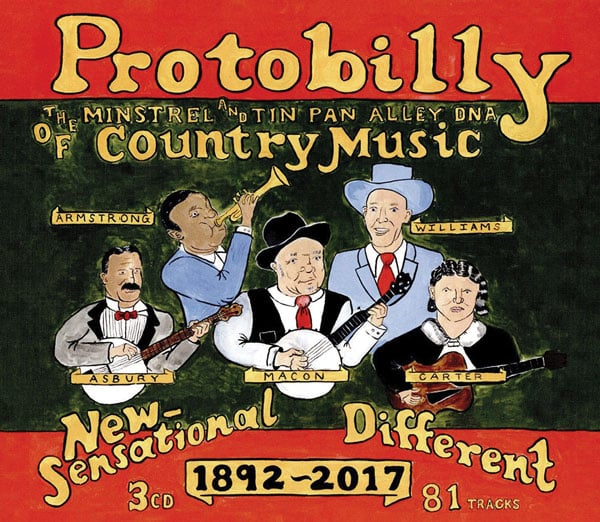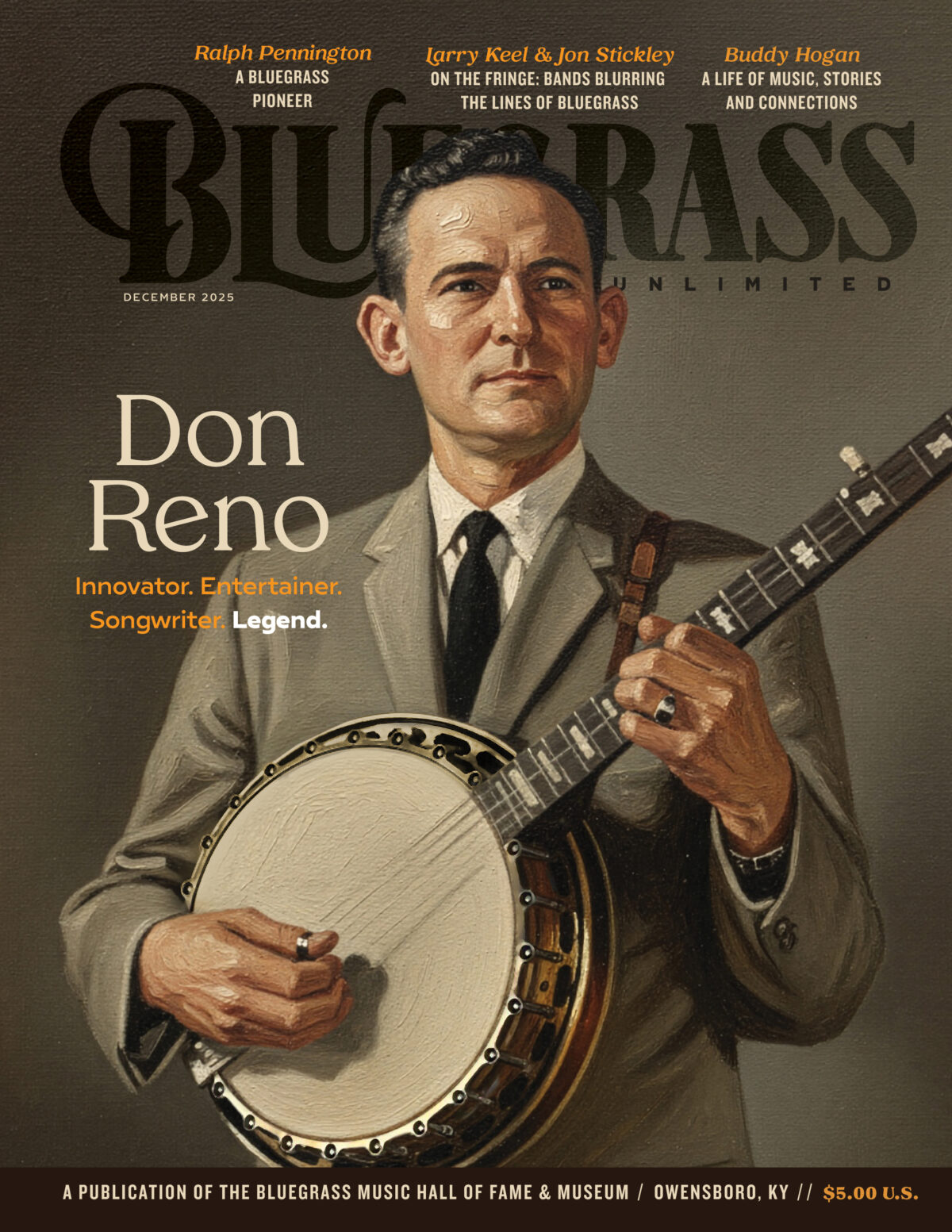The Minstrel and Tin Pan Alley DNA of Country Music
 Protobilly
Protobilly
The Minstrel and Tin Pan Alley
DNA of Country Music
JSP Records
JSP5202
You probably think you know where bluegrass tunes like “Bully of the Town,” “Arkansas Traveler,” “Turkey in the Straw,” “Are You From Dixie,” “Under the Double Eagle” and more came from. Like me, you’re probably wrong about most. Because these tunes and many other familiar refrains in bluegrass and old-time country didn’t arrive with Scottish, Irish and European immigrants bringing their traditional music with them. In fact, they were written by professional songwriters in Tin Pan Alley during the 1910s and ‘20s, or from the minstrel show circuit of that era.
Protobilly: The Minstrel and Tin Pan Alley DNA of Country Music is a masterful, scholarly bit of musicology and folklore that tracks down 81 original recordings and shows us one or more examples of how those songs, written with surgical precision for the record-buying public of that era, evolved and adapted to changing cultural standards.
I haven’t met Henry Sapoznik, but I know for sure he’s a mensch. The work, devotion and passion he put into this project is most impressive. The 3-CD box set includes detailed liner notes by Sapoznik, not only on the songs themselves, but how the record buying habits of Americans in the decades after the turn of the last century demanded racial content that would today ignite street riots.
Don’t even think about approaching this project if you are of the opinion there should be political correctness in all things, past and present. Drawing from the original sources—which is the project’s entire point—means the earlier versions of these tunes were marketed under derisive terms like “race” or “hillbilly” records, or careful euphemisms like “New York’s latest Ethiopian Craze.”
Today’s listener will wince early and often as the performers freely use racial stereotypes and slurs. But that was the cultural norm of the day, which the record companies deliberately exploited for profit by marketing them strategically to black and rural audiences. That approach, indeed, triggered huge sales and created an enormous recording industry. Any objections over racial terms today must also be offset by an appreciation that these recordings enabled talented Black and white musicians to tour, record, and make a living outside of the mines, factories and the fields. It also helped pave the path for many bluegrass stars a generation or two later such as Dom Flemons who contributed notes.
Listen (if you can) to May Irwin’s May 20, 1907 recording of “The Bully Song,” which uses the n-word as often as a Richard Pryor stand-up set from the ‘70s. Then hear how the CD immediately replies with Gid Tanner & the Skillet Lickers’ “Bully of the Town,” which eliminates the now-offensive language on the original. Even the original sheet music cover for “The Bully Song” is beyond reprehensible by modern standards. But, one hopes, we learn from such history.
Major kudos must go out to David Giovannoni and Doug Benson for the amazing job reengineering and mastering the early recordings, some of which were reproduced from the primitive original cylinders and disks. There’s nary a hiss, pop or scratch to be heard.
Protobilly is an absorbing history lesson not just in cultural change through music, but also of the early growth of the recording industry. Work through these CDs and notes and you’ll come away with a fresh, accurate perspective on how much of the music we love to play actually came from and how much it influences even contemporary bluegrass and Americana.
REVIEWED BY David McCarty
